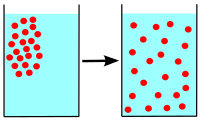
Photo from wikipedia
The pathology of Parkinson’s disease (PD) involves the death of dopaminergic neurons in the substantia nigra (SN), which slowly influences downstream basal ganglia pathways as dopamine transport diminishes. Diffusion magnetic… Click to show full abstract
The pathology of Parkinson’s disease (PD) involves the death of dopaminergic neurons in the substantia nigra (SN), which slowly influences downstream basal ganglia pathways as dopamine transport diminishes. Diffusion magnetic resonance imaging (MRI) has been used to diagnose PD by assessing white matter connectivity in some brain areas. For this study, we applied Lead-DBS to human connectome project data to automatically segment 11 subcortical structures of 49 human connectome project subjects, reducing the reliance on manual segmentation for more consistency. The Lead-connectome pipeline, which utilizes DSI Studio to generate structural connectomes from each 3T and 7T diffusion image, was applied to 3T and 7T data to investigate possible differences in diffusion measures due to different acquisition protocols. Significantly higher fractional anisotropy (FA) values were found in the 3T left SN; significantly higher MD values were found in the 3T left SN and the right amygdala, SN, and subthalamic nucleus (STN); significantly higher AD values were found in the right RN and STN; and significantly higher RD values were found in the left RN and right amygdala. We illustrate a methodology for obtaining diffusion measures of basal ganglia and basal ganglia connectivity using diffusion images, as well as show possible differences in diffusion measures that can arise due to the differences in MRI acquisitions.
Journal Title: Brain Sciences
Year Published: 2023
Link to full text (if available)
Share on Social Media: Sign Up to like & get
recommendations!